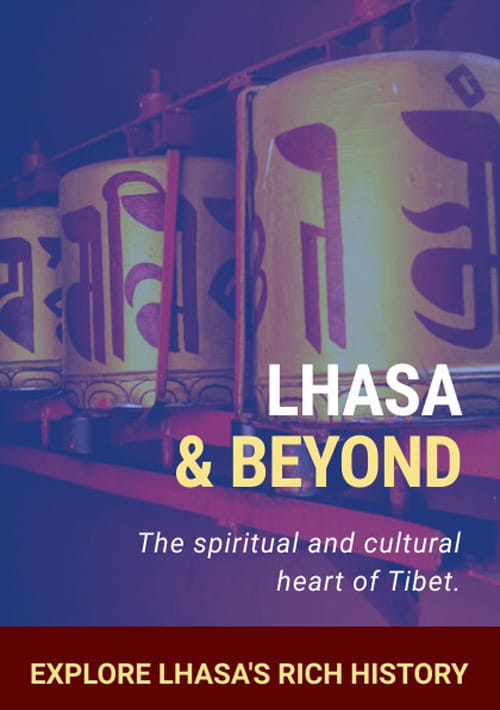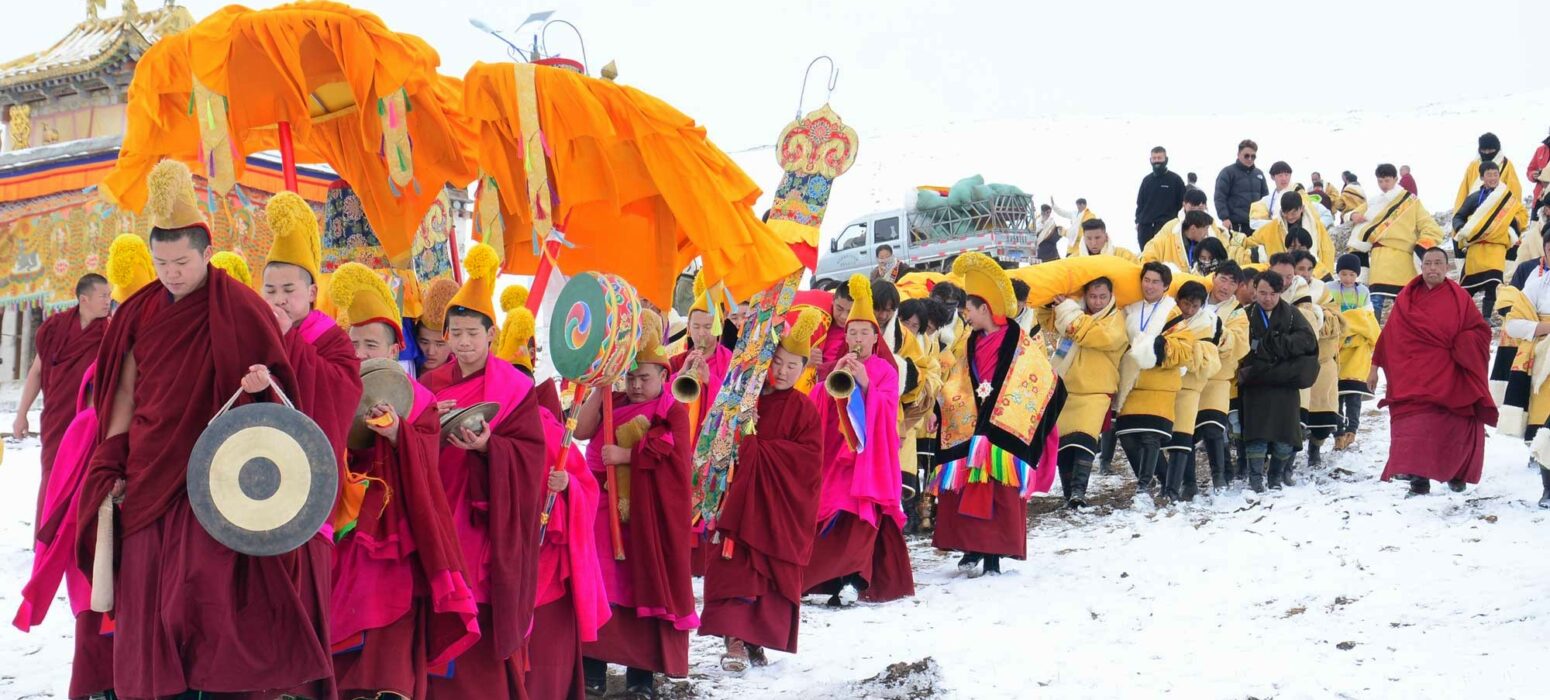

Tibet, a region steeped in rich cultural and spiritual history, is home to some of the world’s most unique and vibrant festivals in Tibet. These festivals not only celebrate religious rituals and ancient traditions but also offer a glimpse into the deep connection between the Tibetan people, their land, and their faith. From elaborate religious ceremonies to joyous cultural performances, festivals in Tibet are an integral part of Tibetan life, preserving the ancient customs and offering a space for both reflection and celebration.
Losar, the Tibetan New Year, is undoubtedly the most important and widely celebrated festival in Tibet. Typically celebrated in February or March, Losar marks the beginning of the Tibetan lunar calendar. It is a time for Tibetans to cleanse their homes, honor their ancestors, and usher in a new year filled with blessings and good fortune.
The festival is characterized by a variety of unique customs. On the eve of Losar, families gather for a special dinner that includes traditional foods like guthuk (a soup made with dumplings), which contains hidden ingredients that predict the fortune of each family member in the coming year. The following days are filled with prayers, offerings, and rituals at monasteries, where lamas perform sacred ceremonies to ensure peace and prosperity for all.
Losar celebrations also feature lively public events, including traditional dances, music, and mask performances that reflect Tibet’s deeply rooted spiritual practices and folklore. As an essential festival in Tibet, Losar is not only a celebration of the new year but also an affirmation of Tibetan identity and cultural continuity.
Saga Dawa, held annually in the fourth month of the Tibetan lunar calendar, is one of the most spiritually significant festivals in Tibet. This festival commemorates the birth, enlightenment, and parinirvana (passing away) of Siddhartha Gautama, the Buddha. It is considered a time of great merit and a period of reflection on the teachings of Buddhism.
During Saga Dawa, Tibetans engage in a variety of religious activities, including making offerings at temples and monasteries, light rituals, and performing prostrations. Many Tibetans also take pilgrimages to sacred sites such as Mount Kailash or the Jokhang Temple in Lhasa. In addition to religious observances, Saga Dawa is also a time for Tibetans to practice acts of generosity and compassion, as it is believed that good deeds performed during this time accumulate great merit.
For those visiting Tibet during this period, Saga Dawa offers a profound opportunity to experience the deep spiritual devotion of the Tibetan people and to witness grand ceremonies that honor Buddha’s legacy.
For those seeking a more lighthearted and festive atmosphere, the Tibetan Horse Racing Festival is a colorful celebration that takes place each summer in the region of Amdo and Kham, which straddles Tibet, Qinghai, Gansu, Yushu and Litang. This annual event celebrates the skill and courage of the Tibetan nomads, who have historically relied on horses for transportation and trade.
The festival includes exciting horse races, equestrian performances, and displays of traditional Tibetan sports, such as archery and wrestling. It is a time for Tibetans to gather in large numbers, showcasing their love for horses, nomadic culture, and traditional attire. The event also features a vibrant marketplace where visitors can find Tibetan handicrafts, jewelry, and delicious traditional foods. The Tibetan Horse Racing Festival is a joyous occasion, with families and communities coming together to celebrate their heritage and the timeless bond between the Tibetan people and their horses.
Shoton, which translates to “Yogurt Feast,” is one of the most prominent cultural festivals in Tibet, celebrated annually in Lhasa, typically in August. The festival has its roots in a centuries-old tradition where Tibetan monks would gather after months of solitary meditation to enjoy a banquet together. Over time, the festival expanded to include public celebrations, attracting thousands of tourists and pilgrims alike.
The highlight of the Shoton Festival is the unveiling of the giant Buddha tapestry at the Drepung Monastery, one of Tibet’s largest and most revered monasteries. The tapestry, which can reach up to 100 meters in length, is carefully unfurled for public viewing, marking a sacred moment for both the devout and visitors. In addition to religious rituals, the Shoton Festival is famous for its cultural performances, including traditional Tibetan opera, which is a form of storytelling through music, dance, and dramatic presentation.
Shoton is one of an important festivals in Tibet not only for its religious significance but also as a celebration of Tibetan art, music, and dance. It is a time when the spiritual and cultural life of Tibet converges, offering a rare glimpse into the region’s living traditions.
Buddha Jayanti, the celebration of the Buddha’s birthday, is another major religious festival in Tibet. It typically falls on the 15th day of the 4th month of the Tibetan lunar calendar. This is a day for Tibetans to pay homage to the Buddha through prayers, offerings, and pilgrimages to sacred Buddhist sites.
In Lhasa, the Jokhang Temple becomes a focal point of celebration, as thousands of Tibetans and pilgrims gather to perform kora (a circumambulation of the temple) while chanting prayers and making offerings of butter lamps, incense, and food. The atmosphere is both reverent and festive, with vibrant displays of religious devotion, music, and the shared joy of honoring the Buddha’s teachings.
Buddha Jayanti serves as an important reminder of the Buddha’s path to enlightenment and the values of compassion, wisdom, and selflessness. It is a time for reflection, renewal, and the reaffirmation of Tibetan Buddhist values.
Lhabab Duchen is another key festival on the Tibetan Buddhist calendar, held in the 9th month of the lunar year. It commemorates the Buddha’s descent from the realm of the gods to Earth after having preached the Dharma to his mother in the heavenly realm. This event is considered one of the holiest days in the Tibetan Buddhist tradition.
During Lhabab Duchen, Tibetans gather at monasteries and temples to engage in prayers, ceremonies, and offerings. Many Tibetans believe that during this time, the merit accumulated from virtuous deeds is multiplied significantly, which makes it a highly auspicious period for acts of devotion and generosity.
Conclusion
The festivals in Tibet offer not just a way of marking time but a deep reflection of the Tibetan people’s devotion to their faith, their community, and their environment. From the joyous celebration of Losar to the deeply spiritual rituals of Saga Dawa, each festival serves as a living testament to Tibet’s rich history and cultural heritage. These events are more than mere celebrations; they are moments of profound spiritual reflection, community bonding, and the perpetuation of traditions that have been passed down through generations.
For anyone visiting Tibet, participating in or witnessing these festivals is an opportunity to experience the unique and captivating spiritual landscape of the Roof of the World. Check Tibetan festival calendar and plan your trip with Tibet holiday.